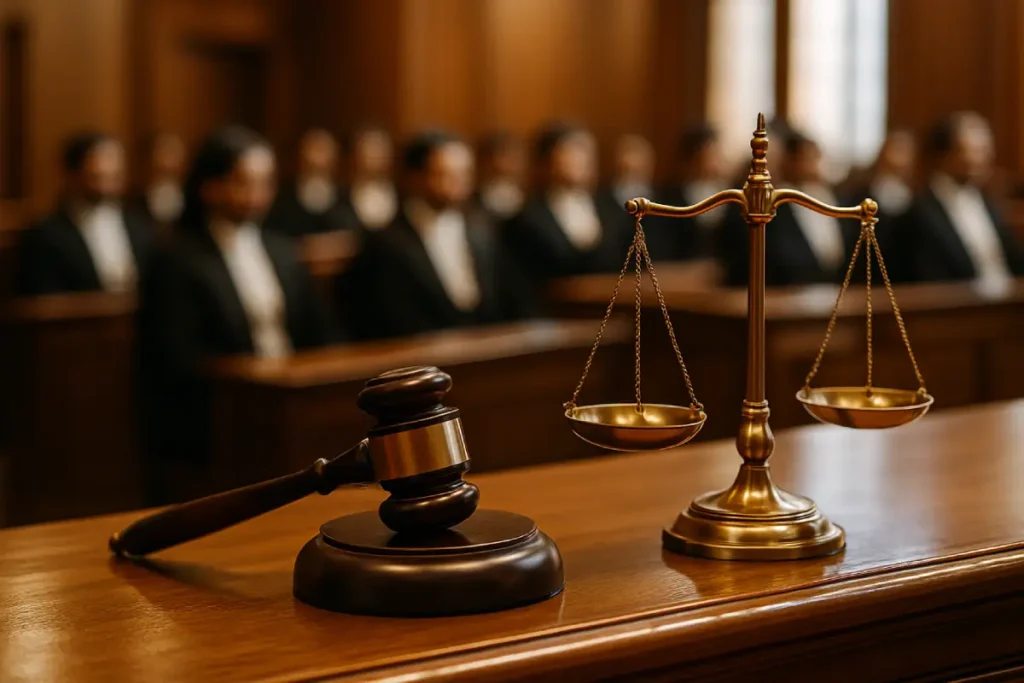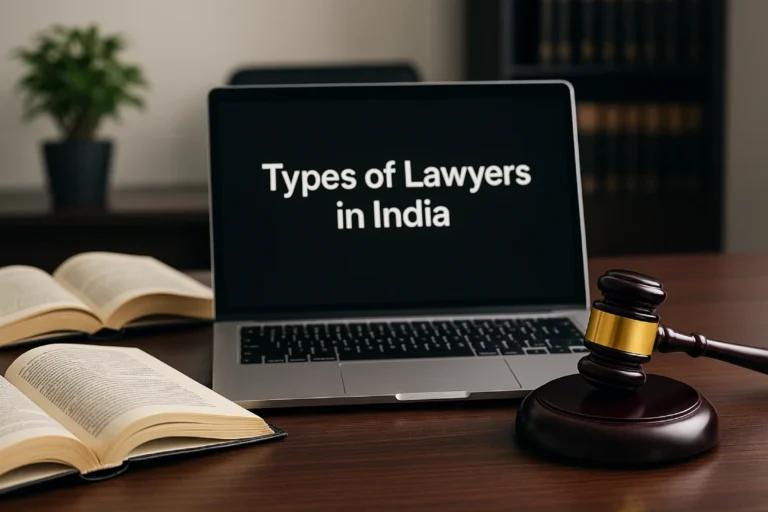Defamation Laws in India: The Ultimate 2025 Guide
Comprehensive, clear and concise answers to every question about offline and cyber defamation, including how to file a defamation case in India and remedies under the IT Act 2000.
Quick Facts (TL;DR)
Need an instant overview of defamation laws in India? Start here.
- Primary statute (criminal): Bharatiya Nyaya Sanhita (BNS) Section 356
- Civil remedy: Tort of defamation (damages + injunctions)
- Cyber defamation tools: BNS Section 356 + IT Act 2000 (sections 66 & 67)
- Limitation: 1 year (civil), 3 years (criminal) from date of publication
- Penalty (criminal): Up to 2 years’ imprisonment, fine, or both
- Key defence: Truth published for the public good
What Are Defamation Laws in India?
A concise, easy‑to‑understand overview of India’s civil and criminal defamation framework.

The phrase “defamation laws in India” refers to the combined effect of (a) BNS Section 356, which criminalises intentional harm to reputation, and (b) long‑standing civil principles that let victims sue for money damages. India tries to balance Article 19(1)(a) free‑speech rights with Article 21’s protection of personal dignity. Any spoken, written, or digital statement that lowers another person in the estimation of right‑thinking members of society may be actionable.
Legal Test (4 Ingredients)
Each must exist or your case fails.
- Imputation – A defamatory statement (words, image, video, emoji, meme).
- Publication – It reached at least one third party.
- Fault – The publisher intended, knew, or should have known it could harm reputation.
- Harm – Actual or reasonably foreseeable injury to reputation.
Criminal vs Civil Defamation in India
Choose your remedy based on goal—punishment or compensation.
| Factor | Criminal (BNS Section 356) | Civil (Tort) |
| Objective | Punish wrong‑doer | Compensate victim |
| Standard of proof | Beyond reasonable doubt | Balance of probabilities |
| Limitation | 3 yrs | 1 yr |
| Outcome | Jail ≤ 2 yrs / Fine / Both / Community service | Damages, apology, injunction |
Courts often encourage settlement; filing both simultaneously is lawful.
Cyber Defamation: Reputation Damage in the Digital Age
Online posts can reach millions within minutes, magnifying harm.
Cyber defamation occurs when defamatory content is published via the internet or electronic devices—tweets, Reels, podcasts, blog comments, even AI‑generated text. Every element of traditional defamation still applies, but digital evidence and global reach add layers of complexity.

Cyber Defamation Under IT Act 2000
Supplementary provisions that strengthen BNS enforcement.
- Section 66 – Punishes unauthorised or dishonest computer acts. If hacking accompanies defamatory uploads, police can add this charge.
- Section 67 – Criminalises publication of obscene material. Often paired with defamation when morphed images are used to shame victims.
- Intermediary Rules 2021 – Social‑media platforms must remove defamatory posts within 24 hours of a “actual knowledge” takedown notice or court order.
Note: IT Act Section 66A was struck down in 2015 (Shreya Singhal). Mentioning it today is legally incorrect ensure complaints cite current provisions.
Key Elements to Prove Cyber Defamation
A focused checklist for digital litigants.
- URL or post ID showing date/time stamp.
- Screenshots & screen‑recordings with metadata.
- Witness testimony (likes, shares, comments).
- Platform acknowledgement of takedown request.
- IP address logs or subscriber info (seek via court‑ordered disclosure).
How to File a Defamation Case in India (Step by Step)

Clear action plan for victims—offline or online.
1. Preserve Evidence Immediately
Save webpages as PDF, record device logs, and notarise if possible.
2. Send a Legal Notice (Optional but Smart)
15‑day demand for apology/retraction often resolves disputes quickly.
3. Select Forum
– Criminal: File a private complaint before the Judicial Magistrate; attach evidence & witness list.
– Civil: File a suit for damages in the district court/high court depending on claim amount.
4. For Cyber Defamation
– Lodge an e‑FIR at the state cyber‑crime portal; attach evidence package.
– Issue notice to platform under Intermediary Rules.
5. Court Process & Timelines
– Magistrate must consider cognizance within 30 days; charges framed in 60 days; trial ideally completed within 45 days thereafter (BNS fast‑track directive).
– Civil courts may grant interim injunction within 24‑48 hrs for urgent takedowns.
Valid Defences & Statutory Exceptions
Knowing these helps both plaintiffs and defendants.
- Truth for public good
- Fair comment on public conduct of public figures
- Absolute privilege (parliamentary/judicial proceedings)
- Qualified privilege (fair & accurate reporting)
- Consent of aggrieved person
Courts balance reputation with the larger public interest in free expression.
Landmark Judgments Shaping Defamation Jurisprudence
A snapshot every lawyer and content creator should recall.
- Subramanian Swamy v. Union of India (2016) – Upheld criminal defamation; dignity ≈ fundamental right.
- Shreya Singhal v. Union of India (2015) – Struck down IT Act Section 66A; online speech on par with offline.
- SMC Pneumatics v. Jogesh Kwatra (Delhi HC 2004) – First Indian cyber defamation injunction (defamatory emails).
- Tata Sons v. Greenpeace (2011) – Protected satire/parody absent malice.
Penalties & Remedies Overview
What victims can realistically expect.
- Criminal: Imprisonment up to 2 years; fine; or both; community service possible under BNS reforms.
- Civil: Compensatory, aggravated, and exemplary damages + legal costs.
- Injunctions & Takedowns: Rapid relief, especially for viral posts.
- Apology Orders: Courts may compel publication of a public apology.
Practical Tips to Avoid & Mitigate Cyber Defamation
Proactive steps for individuals, brands, and influencers.
- Set up Google Alerts for your name/brand + keywords.
- Use strong passwords & MFA to prevent account hijacking.
- Archive social media activity regularly for evidentiary trail.
- Respond factually, not emotionally to online slander.
Seek legal help early; limitation periods are strict.
Frequently Asked Questions (FAQs)
Quick, easy‑to‑understand answers to the most common defamation queries.
Is defamation in India a civil or criminal offence?
Both. BNS Section 356 creates a criminal offence; civil suits claim monetary damages.
What qualifies as cyber defamation?
Any defamatory content posted online tweets, blogs, videos that harms reputation.
Which IT Act provision covers cyber defamation?
While no single section labels it “cyber defamation,” Sections 66 & 67 often apply alongside BNS Section 356.
How long do I have to file a defamation case?
1 year for civil claims, 3 years for criminal complaints from the date of publication.
Can I sue if the offender lives abroad?
Yes, if harm occurs in India. Enforcement may involve mutual legal assistance.
Conclusion
India’s updated defamation laws in India bolstered by digital‑era rules offer multiple routes to defend reputation. Whether you face a newspaper smear or cyber defamation under IT Act 2000, understanding the four legal ingredients, available defences, and how to file a defamation case in India ensures timely, effective relief.
Need guidance? If you require professional assistance to file or defend a defamation case, you can connect with our defamation lawyers for clear, step‑by‑step support.







